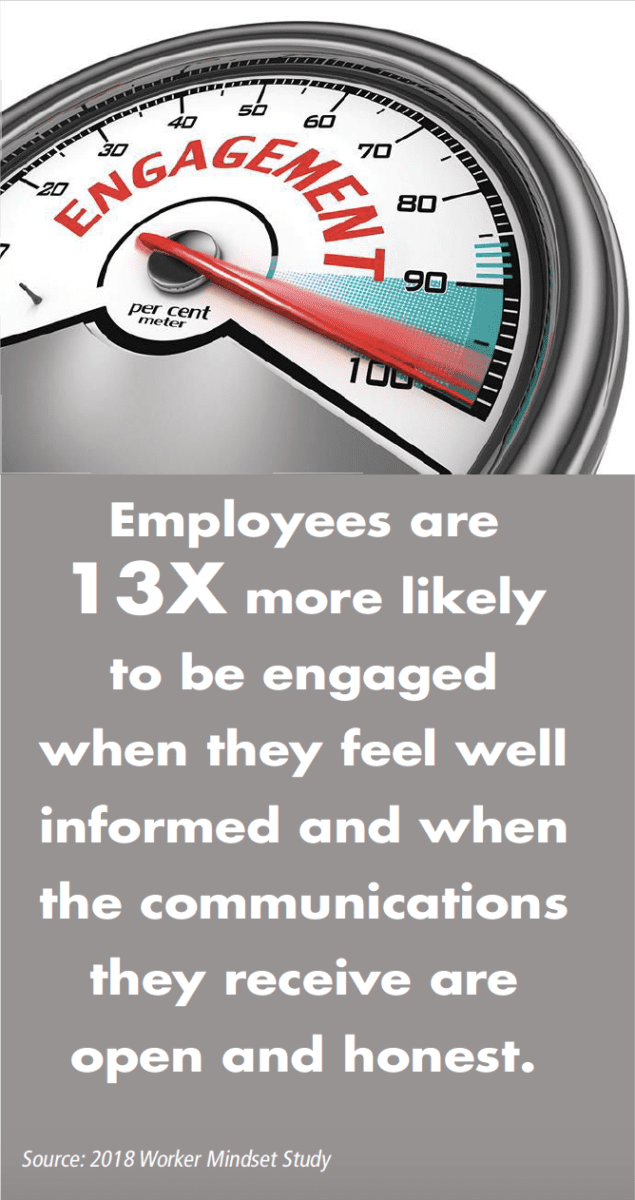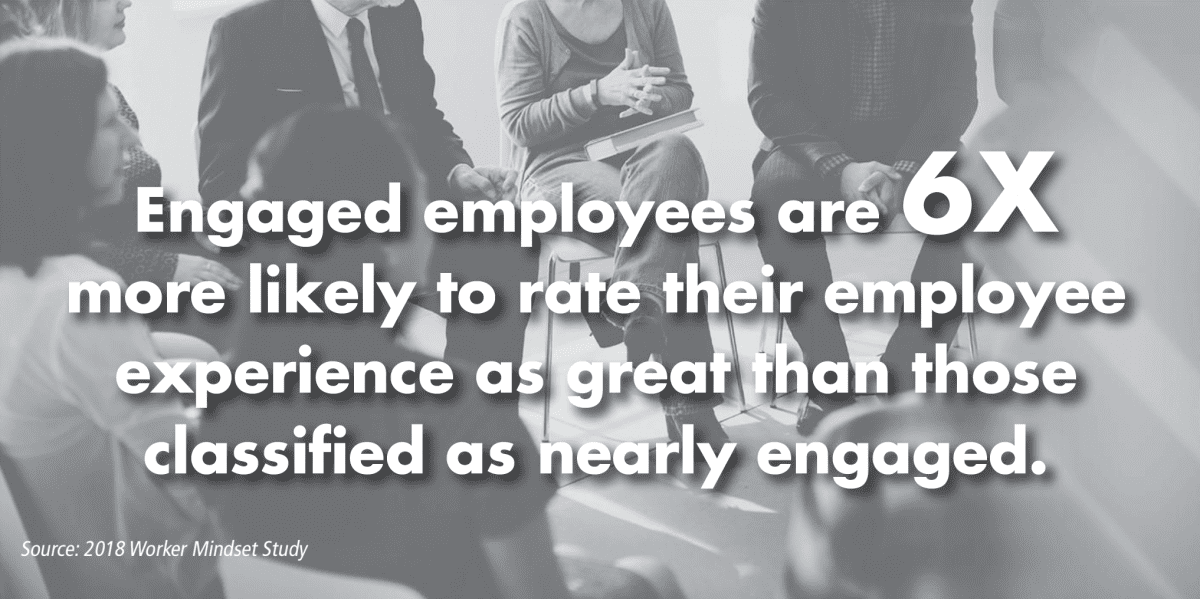New research uncovers four key drivers to curating an impactful employee experience.
By Colon McLean and Ray Baumruk
With economic expansion and a competitive labor market, organizations are increasingly fighting to protect their bottom line while attracting and retaining top talent. This has placed more pressure than ever before on HR to focus on enhancing employee engagement and productivity. However, even as investments in pay, benefits, and other HR programs have increased over the past few years, research from Alight Solutions shows that employees and employers alike are struggling to improve employee engagement. According to the 2018 Workforce Mindset Study, an employee’s ability to get work done efficiently and collaborate and contribute on meaningful projects are factors that create an engaging workplace environment. These elements also shed light on a much larger driver of organizational success: the overall employee experience. The employee experience is the collective set of day-to-day work interactions that enable people to give their value fully and efficiently, express their authentic selves at work, and connect with other people while contributing to a meaningful corporate brand and purpose.
The study draws a direct correlation between engagement and the employee experience. In fact, engaged employees are six times more likely to rate their employee experience as great than those classified as nearly engaged. While there are a multitude of factors that drive an employee’s engagement, several of which are outside an organization’s direct influence, companies can design and deliver a great employee experience as a path to enhanced engagement and performance. In 2018, only 23 percent of U.S. workers said they have a great employee experience, meaning there is plenty of opportunity for progress. Insights from the 2018 Workforce Mindset Study point to four areas of opportunity for organizations to explore as they look to create a great employee experience.
1. Flexibility. When asked what characteristics they want their employers to have, U.S. workers by and large said that flexibility was the most meaningful quality. In fact, 51 percent of workers would not consider taking a new role if it provided less flexibility than their current role. Workers who would give up their desired flexibility for a new role said they would want a 31 percent pay increase on average to offset the shortcomings of less flexibility.
Workers are simply looking for opportunities to weave their employment experience into their ever-evolving life and related priorities. Flexibility means different things to different people. For some, it may mean an altered schedule or flexible hours; for others, it may mean working remotely in order to make an after-school soccer game. As employers begin to focus on key drivers for building a great employee experience, they should take the opportunity to learn from their workers about what flexibility means to them and how it can help meet their changing needs.
2. Technology. As newer and faster technology continues to enter the marketplace, workers are seeking to have a technology experience at work that mirrors that of their personal lives. While 50 percent of workers believe their current workplace technology enables productivity, 31 percent of employees say they are often frustrated by their company’s technology. A top request from employees today is for an easy-to-use, one-stop shop for job, HR, benefits, pay, and employee information. Additionally, only 40 percent of workers believe their HR systems are easy to use. According to the research, when HR systems work effectively, employees are six times more likely to be engaged. If companies want employees to be engaged and working efficiently, then they must understand what is and isn’t working when it comes to technology in the office. Many companies are aggressively leveraging cloud-based applications to allow workers to access data and perform work in the most flexible way. A flexible work environment without flexible technology doesn’t make for a great employee experience.

When it comes to finding the right information about factors like pay or benefits, 62 percent of workers say they know where to go, which is a decrease of nine percentage points from just three years ago. A comprehensive communication review is a great way to identify available tools and channels, examine their effectiveness, and then simplify and strengthen communications efforts based on the needs of the company’s employee population. A frequent shortfall of many communications platforms is the failure to ensure accountability for managing content, making sure it is current, compelling, and accessible to employees. A big impact can be made with relatively minimal effort.
4. Connection. Employees who have a strong connection to their company and team are more likely to be engaged than those who do not. Research from the Workforce Mindset Study shows that 43 percent of U.S. workers say their company’s culture and purpose inspire them to work at their best. With only 45 percent of employees feeling connected to the mission of their company, there is plenty of room for organizations to step up and engage their workers by building out or more effectively deploying an employee value proposition (EVP).
An effective EVP is not something employees just read on a careers site, it is something they experience in their daily life as employees. It embodies the behaviors that drive company culture and personally connect individuals with the company’s purpose. It should go without saying that everyone wants to be included, heard, and valued, but in truth, a large portion of employees are not feeling that way. In fact, 85 percent of workers expect their manager to value their opinions on matters that affect them, but less than half say their manager does. In addition, only half of U.S. employees believe their manager cares about them as a person. This doesn’t mean that these leaders are necessarily bad managers; they just may not be equipped with the right tools to be successful. In fact, only 50 percent of managers say they have the proper tools to have these conversations. Managers need active personal support and direction to maximize their leadership role within the organization as they develop future leaders.
A great employee experience is critical to achieving goals in attraction, retention, and performance. With mounting evidence toward its more direct path to productivity and engagement, it should be a goal of organizations (including HR, IT, facilities, and others) to improve the drivers of the employee experience. Companies should use all the tools at their disposal -surveys, town halls, performance feedback -to solicit input from employees about what works and what doesn’t. With real and ongoing feedback, organizations will be best positioned to design and deliver an employee experience that fosters engagement and positive business outcomes for all stakeholders.
Colon McLean is chief human resources officer, and Ray Baumruk is vice president of employee experience design, research, and insights for Alight Solutions.















